Whether they’re grown in window boxes, porch planters, or garden beds, geraniums are reliable bloomers that produce a showy display of pink, red, and white flowers from spring through fall. But while geraniums are naturally prolific plants, many gardeners find that geraniums become spindly by midsummer, and plants may produce fewer flowers at this time. If this has happened to you, there’s no need to worry – there are lots of easy ways to encourage geranium plants to flower more abundantly right through fall.
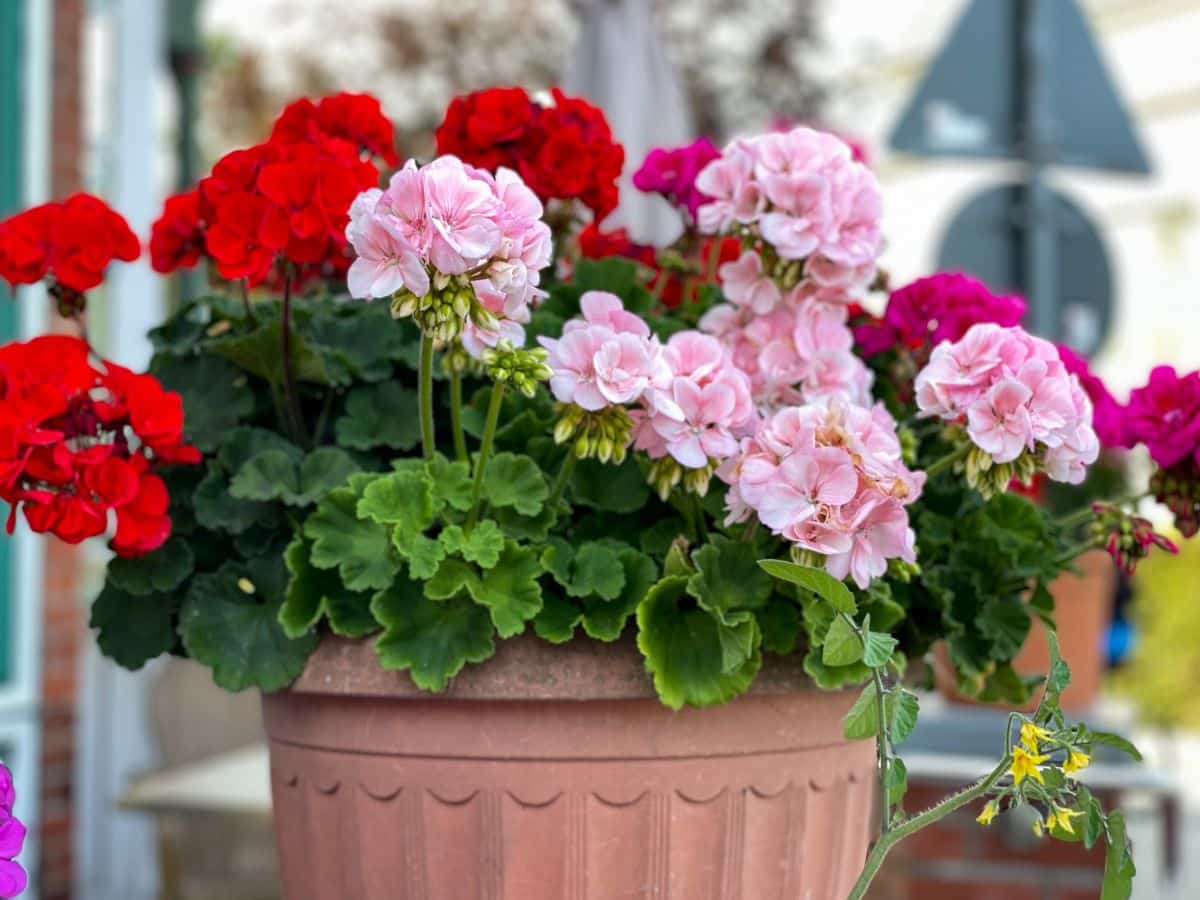
Geraniums can be grown as perennials in some warm locations, but gardeners in chilly regions typically grow geraniums as annuals. No matter if you keep annual or perennial geraniums in pots or in your flower garden, the simple steps below will help you grow healthier geranium plants and get more geranium flowers as well!
Jump to:
- 8 tips to keep geranium plants blooming strong
- 1. Provide your plants with lots of sun.
- 2. Water well.
- 3. Fertilize regularly.
- 4. Deadhead spent blooms.
- 5. Clip away damaged leaves.
- 6. Pinch back leggy stems.
- 7. Check for pests.
- 8. Choose the right pot size.
- Frequently asked questions about geranium flowers
- Summary
8 tips to keep geranium plants blooming strong
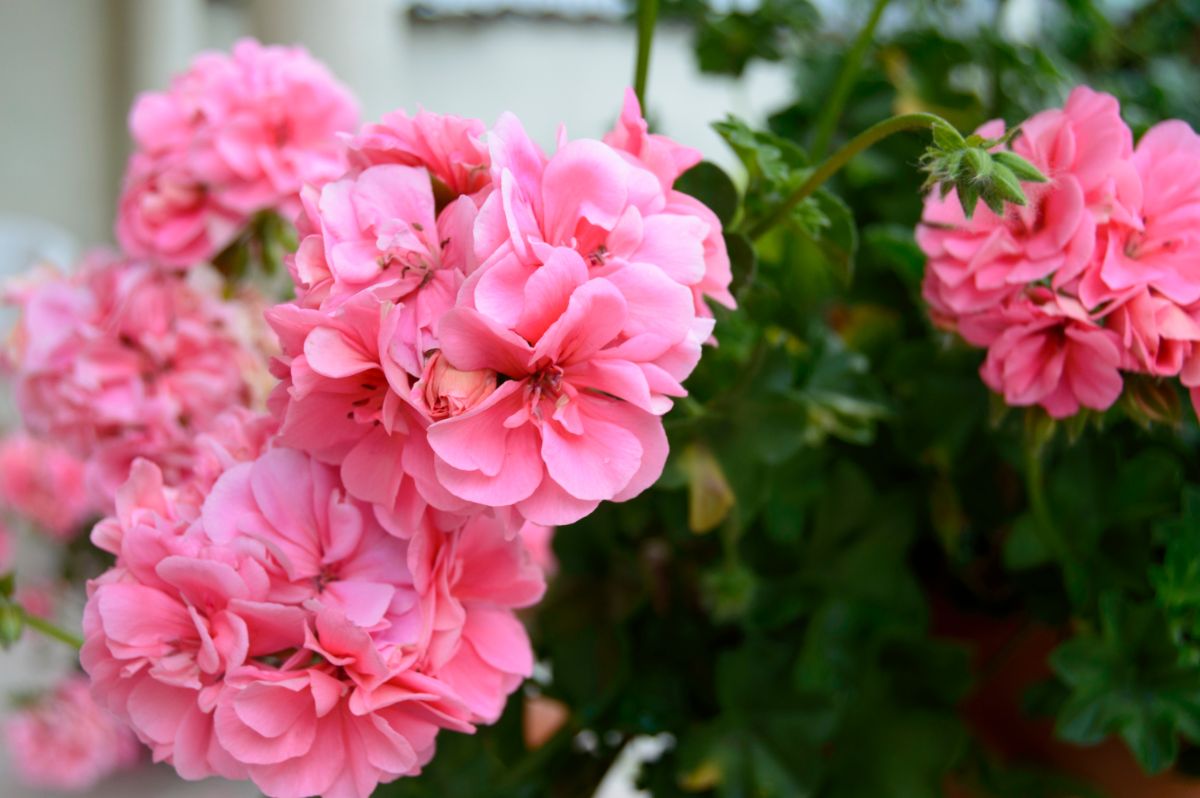
Happy plants produce more flowers, so if you want your geraniums to produce a lavish display of blooms, you’ll need to provide your plants with the right balance of light, water, and nutrients. Beyond that, pruning can also keep your geranium plants looking trim throughout the season. The 8 simple tips below are all essential if you want to get more geranium flowers, but they’ll also help you keep your plants in tip-top shape too!
1. Provide your plants with lots of sun.
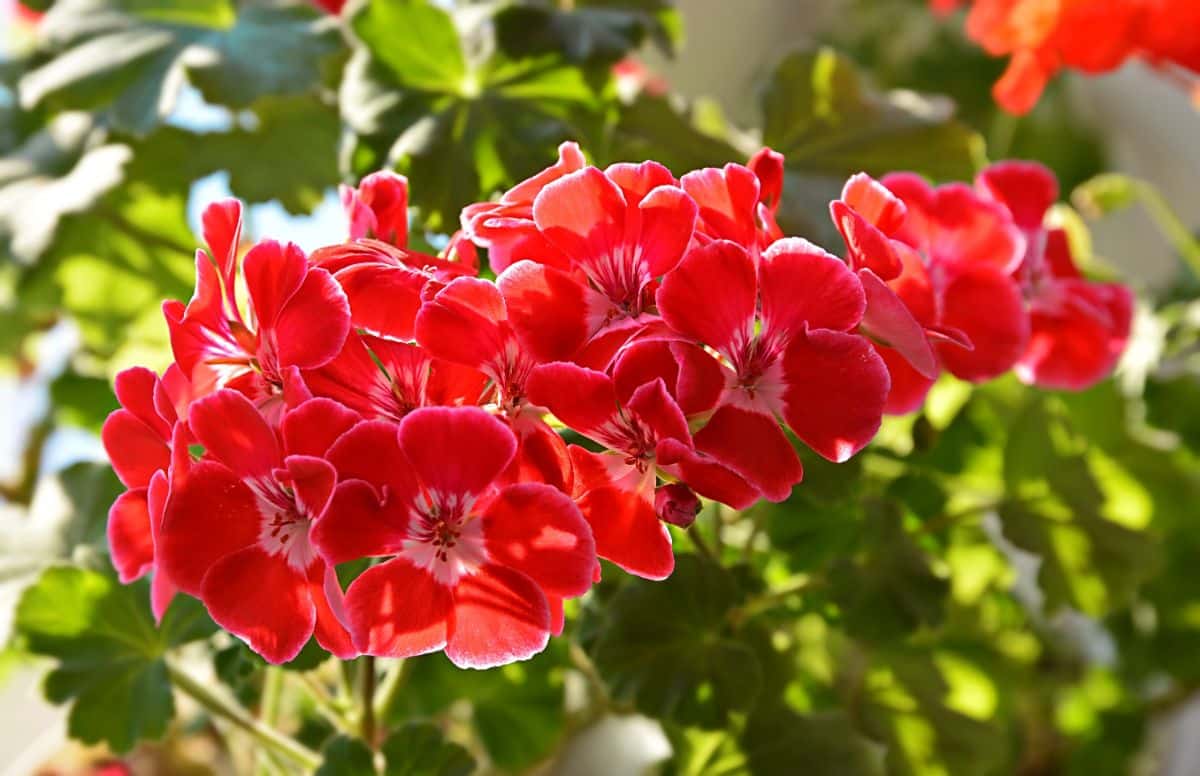
Geraniums are sun-loving plants that need tons of bright sun to flower properly. When grown in low-light areas, geraniums will become leggy, and they won’t produce many flowers. However, if geraniums are located in a full sun location, they will be able to photosynthesize well, and this is key if you want lots of gorgeous geranium blooms.
For optimal flowering, geraniums should receive at least 4 to 6 hours of direct light daily. If you keep geraniums in pots, be sure to locate them in an area of your porch or patio that receives a good deal of bright morning light. On the other hand, if you keep geraniums in hanging pots under a porch overhang, you may want to add an extender chain to lower your plant so it isn’t growing in the shade.
2. Water well.
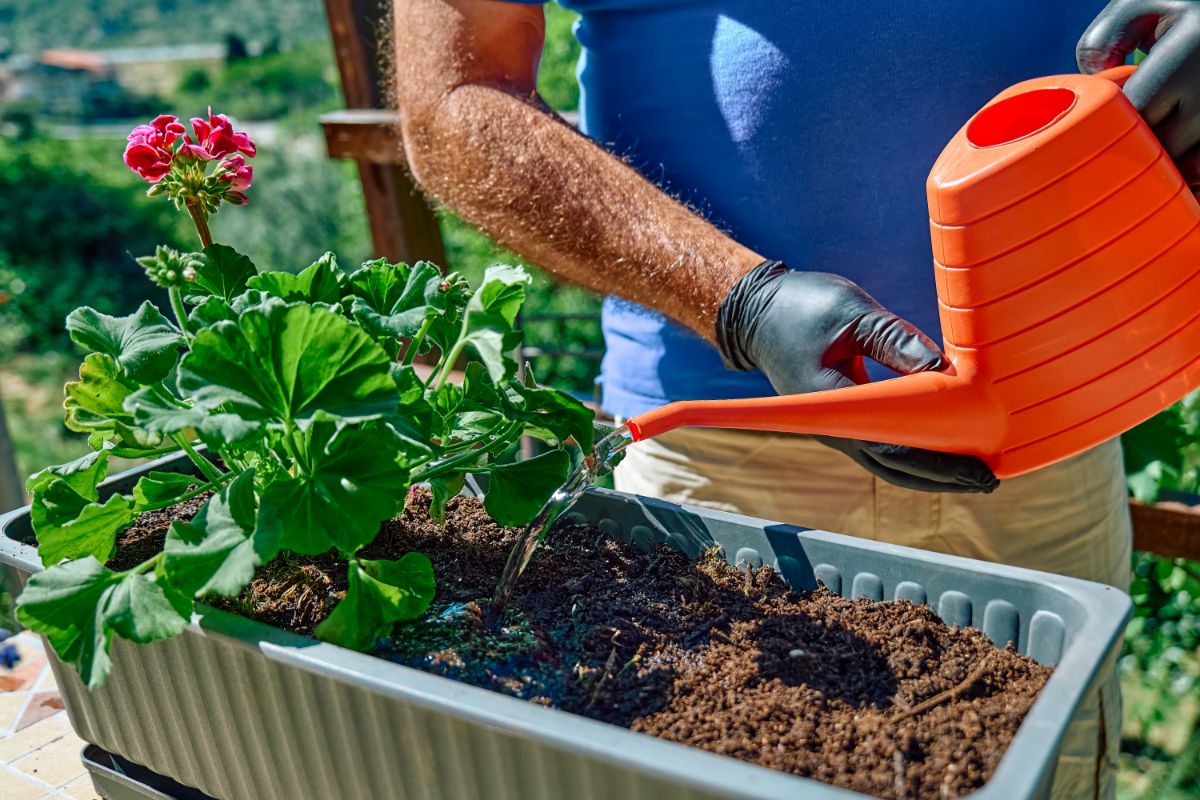
Geraniums need a moderate amount of water to grow well, and if plants receive too little water, they can become stressed. Water-stressed plants may droop and turn brown, and they also won’t flower well. But while geraniums definitely need water, too much water can also have devasting effects, and geraniums kept in soggy soil for an extended period of time often develop root rot!
When watering geraniums, finding that perfect moisture balance is key. Geraniums grown in garden beds may only need to be watered about once a week, while geraniums kept in pots will usually need to be watered more often as potting soil in containers tends to dry out quickly. You’ll know it’s time to water your geraniums when the top 1” of soil feels dry to the touch, but you can also invest in a soil moisture meter if you often forget to water your plants.
3. Fertilize regularly.
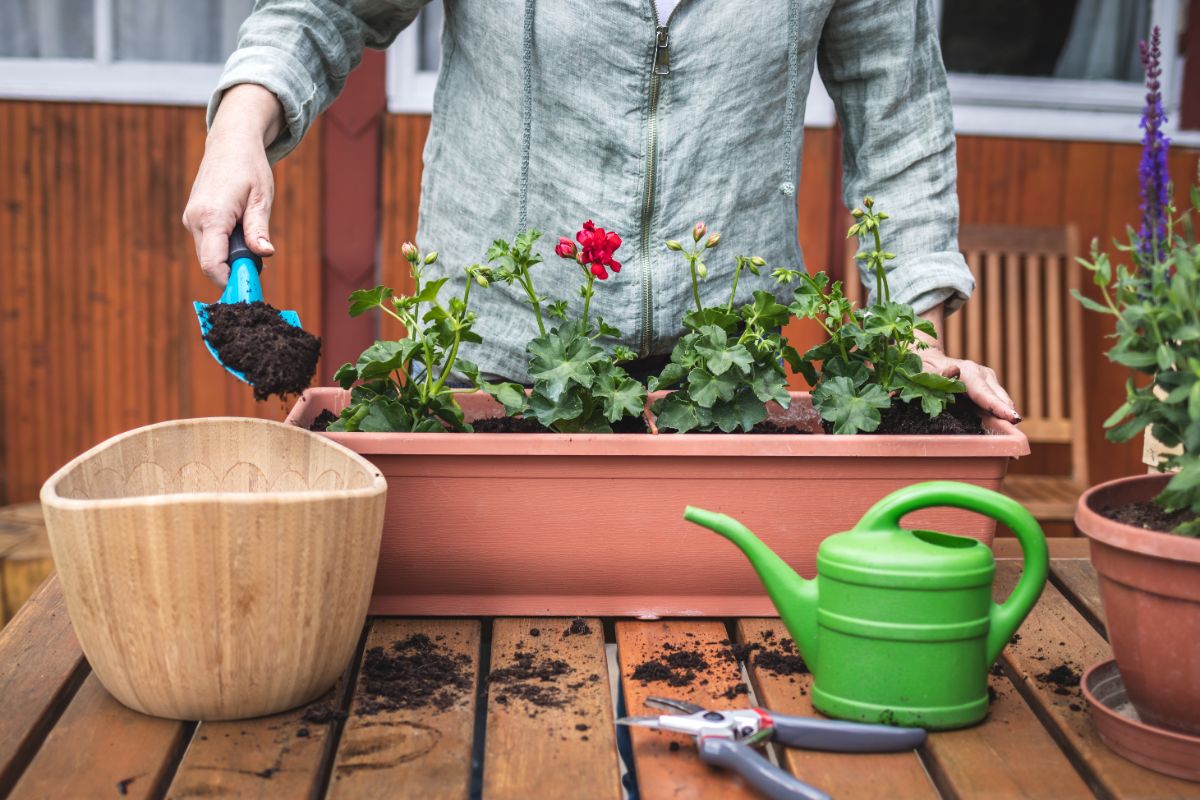
Geraniums are not heavy feeders, but they will bloom best if they’re provided with extra nutrients throughout the growing season. If you’re growing geraniums in pots, plant your geraniums in a rich potting mix and consider amending the soil with a bit of compost or worm castings. Compost and worm castings function as slow-release fertilizers, offering nutrients to your plants’ roots throughout the growing season and supporting the growth of both leaves and flowers.
Beyond compost, it’s a good idea to feed your geranium plants with an organic liquid fertilizer from spring through fall. Always follow the application instructions on your fertilizer packaging, but in general, geraniums should be fed about once every 2 to 3 weeks with liquid fertilizer diluted to half strength. Kelp or fish emulsion is ideal for geraniums, but you can try out other all-purpose or low-nitrogen fertilizers, too!
4. Deadhead spent blooms.

Some plants don’t need to be deadheaded, but geraniums almost always benefit from this practice, and it’s an essential maintenance step if you want more of those big and beautiful geranium flowers! Deadheading involves clipping or pinching away spent blooms as soon as geranium flowers start to fade. This helps plants conserve nutrients, and redirects plant energy towards producing more flowers.
When deadheading geraniums, you need to be more aggressive than simply snipping away old flowerheads. Instead, the entire flowerhead and supporting stalk should be pinched or snipped away at its base, right above a leaf node. The good news is that geranium stems are easy to pinch with your fingers, so you will rarely need to pick up pruners when deadheading these plants.
5. Clip away damaged leaves.
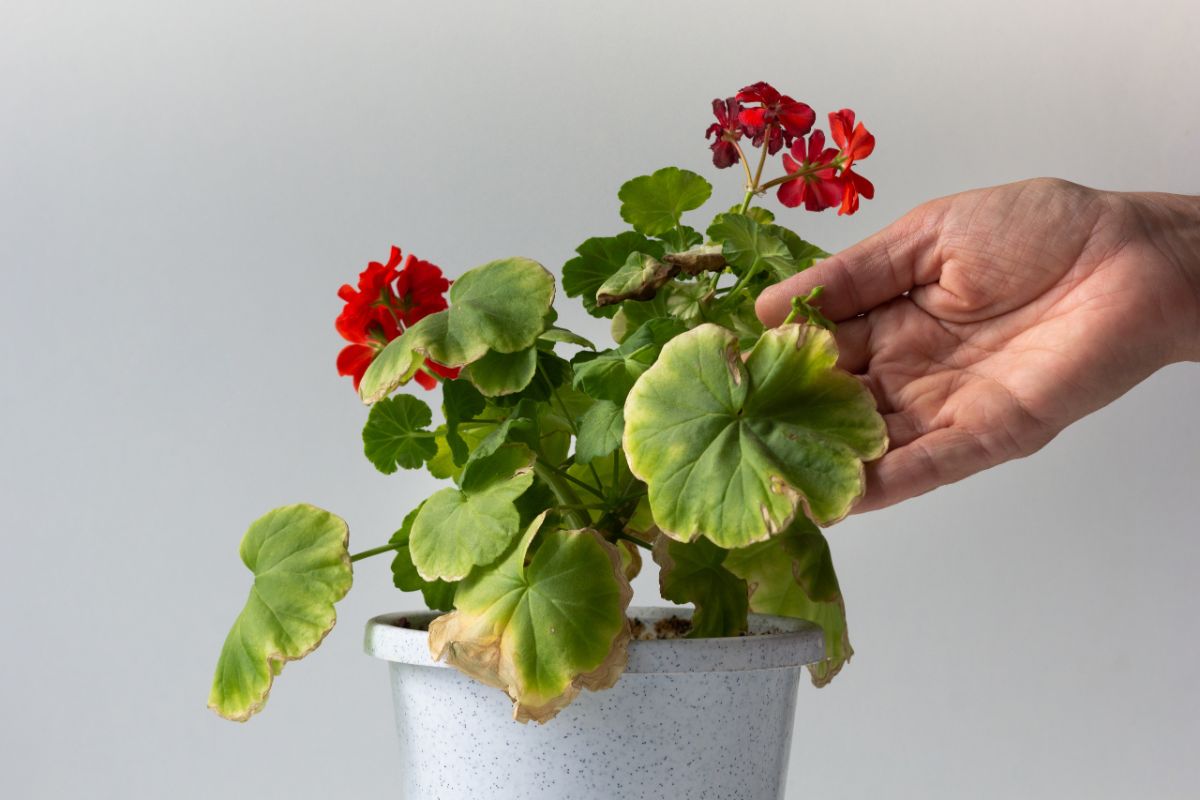
While you’re busy deadheading the old flowers off of your geranium plants, don’t forget to clip away any damaged or yellow leaves, too. Old and tattered leaves will detract from your plant’s appearance, but more than that, they also funnel energy away from flower production. And you definitely don’t want that!
As with deadheading, you can pinch or clip old geranium leaves off with your fingers or with a sharp pair of scissors. To be extra safe, you may want to sterilize any tools you use with a bit of rubbing alcohol to make sure you don’t accidentally spread a plant disease to your geraniums when you’re tidying them up.
6. Pinch back leggy stems.

Removing spent flowers and damaged leaves is are simple way to improve the look of geranium plants and boost blooming, but geraniums also benefit from being pinched back from time to time. Pinching back geraniums is particularly useful for plants that are grown as perennials, as this process removes older stems and keeps geraniums from becoming woody. Container-grown annual geraniums also tend to get leggy over time, but this can be remedied by pinching back stems whenever they look overgrown.
Geraniums should first be pinched back in spring, but plants can be pinched back again and again whenever they look a little overgrown. This will keep geraniums more compact, but it also prompts plants to branch out and produce more flowers. Geraniums can be pinched back with either your fingers or a pair of sharp scissors by clipping off leggy stems immediately above a leaf node.
7. Check for pests.
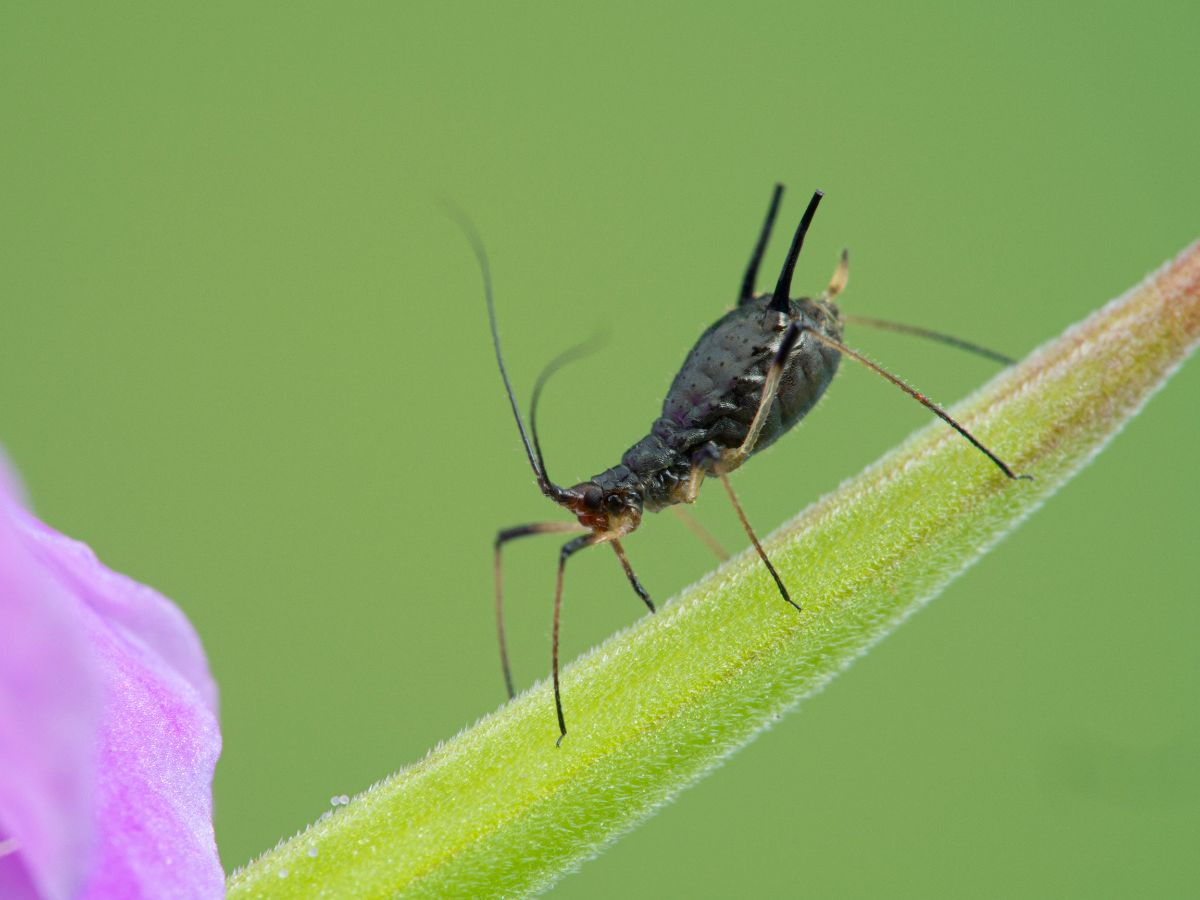
Most geraniums have a relatively strong scent, which naturally repels many garden pests. However, geranium plants can sometimes attract certain nuisance insects, including cabbage loopers, aphids, and fall cankerworms. And while a few of these pests may not cause many problems for your geraniums, if your plants are swarming with pests, they may become too stressed to flower!
Since geraniums attract pollinators, it’s best to avoid spraying these plants with any pesticides, as even organic pesticides can harm pollinators if they’re applied in the wrong way. Instead, aphids can usually be removed with a strong blast from your garden hose, while cabbage loopers and other caterpillars can be removed with hand-picking and then dropped into a bucket of soapy water. If you do decide to spray your geraniums, opt for organic products like soap spray or BT thuricide and only apply these products in the evening when pollinators are less active.
8. Choose the right pot size.
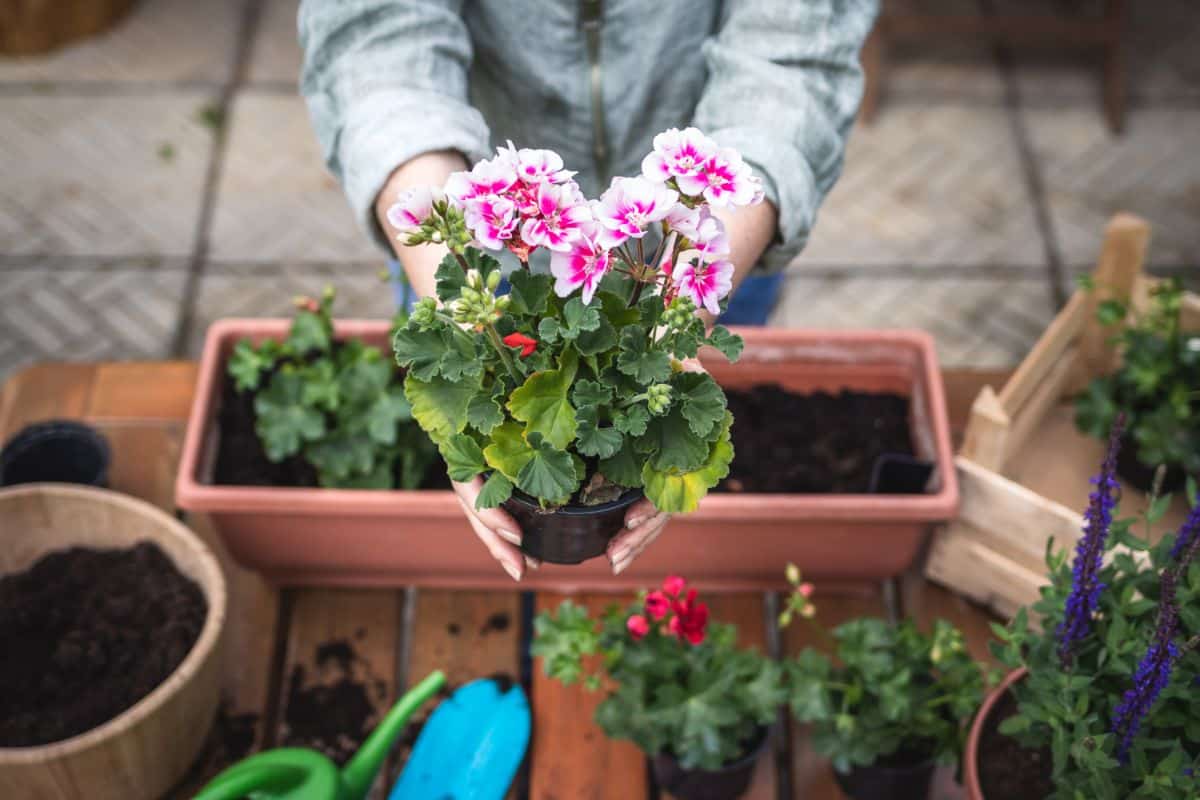
Geraniums like to be cozy in their pots, so you don’t want to pot your geraniums in too large of a container. Not only are large pots unnecessary for geraniums, but plants kept in oversized growing containers are more likely to be overwatered, and this can lead to root rot. Yikes!
Annual geraniums only need a 10” diameter pot, while most perennial geraniums will grow beautifully in containers that are about 12” wide. If you want to grow multiple geraniums or other plants together, feel free to increase your pot size accordingly, but don’t go overboard with an unnecessarily massive pot! Also, make sure that your geranium growing containers have plenty of drainage holes at their bases so your plants aren’t sitting in soggy earth.
Frequently asked questions about geranium flowers
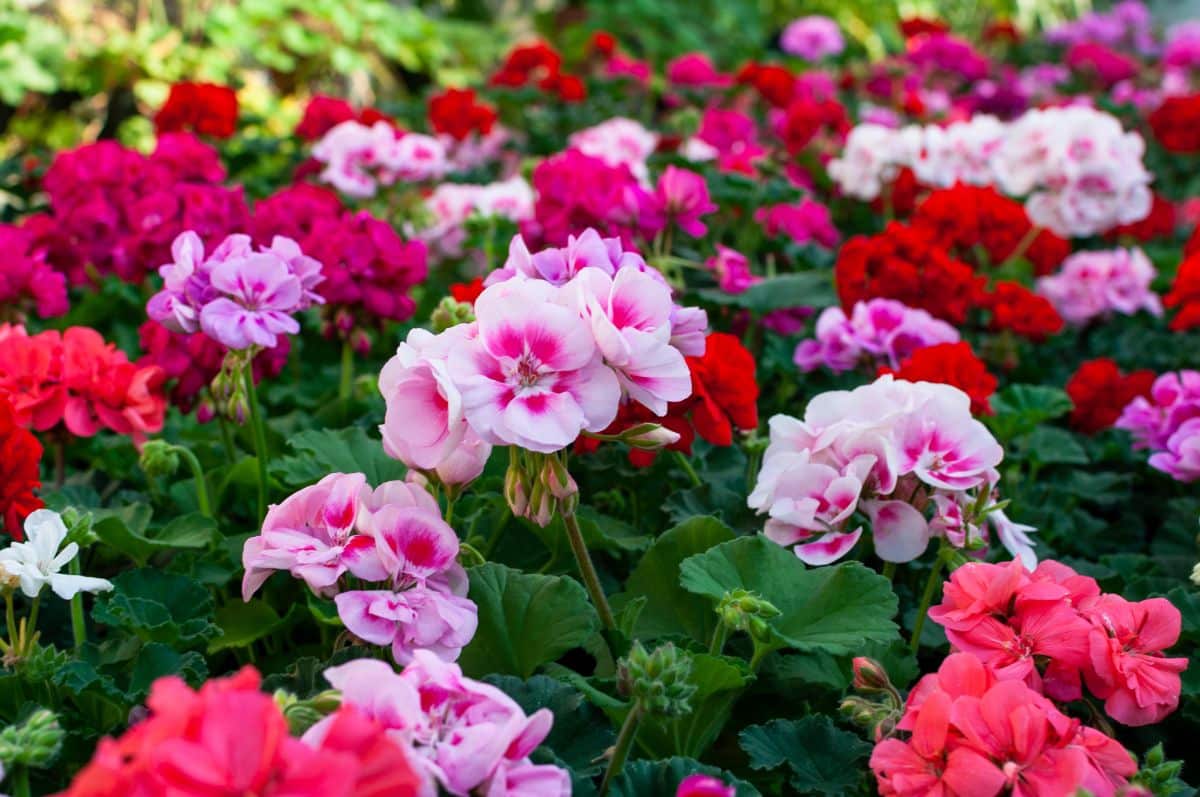
Geraniums grown in low light won’t produce many flowers, and they may stop flowering altogether if light levels are very low! However, if your geranium plants are growing in full sun and they still aren’t flowering, you may be dealing with a fertilizer issue. When geraniums and other flowering plants are fertilized with a high nitrogen fertilizer, they often produce lots of leaves, but their flowers won’t be as abundant.
Geraniums are prolific plants that will generally bloom from late spring to the first frost of fall. That means that if you live in an area with mild winters, you may be able to enjoy geranium flowers even in winter!
Geraniums can bloom all summer long, but they may produce fewer flowers in very hot weather. If you’re experiencing a heat wave in your garden, consider moving potted geraniums into a spot that receives partial afternoon shade when temperatures soar.
Geraniums can handle direct sun, but plants may languish in the summer if temperatures are super high. In areas with extreme heat, geraniums may grow and flower better if they’re kept in a location that receives some partial shade in the afternoon.
Yes! Well-maintained common or zonal geraniums will often bloom continuously from spring through fall. You can encourage plants to flower more prolifically by deadheading spent blooms as soon as the flowers start to fade.
The most common reason why potted geraniums struggle is due to watering issues. Water can be more difficult to regulate with potted plants, and potting soil dries out much more quickly when plants are kept in containers. Overwatering is also more common in container-grown plants, especially if plants are kept in plastic pots.
Summary
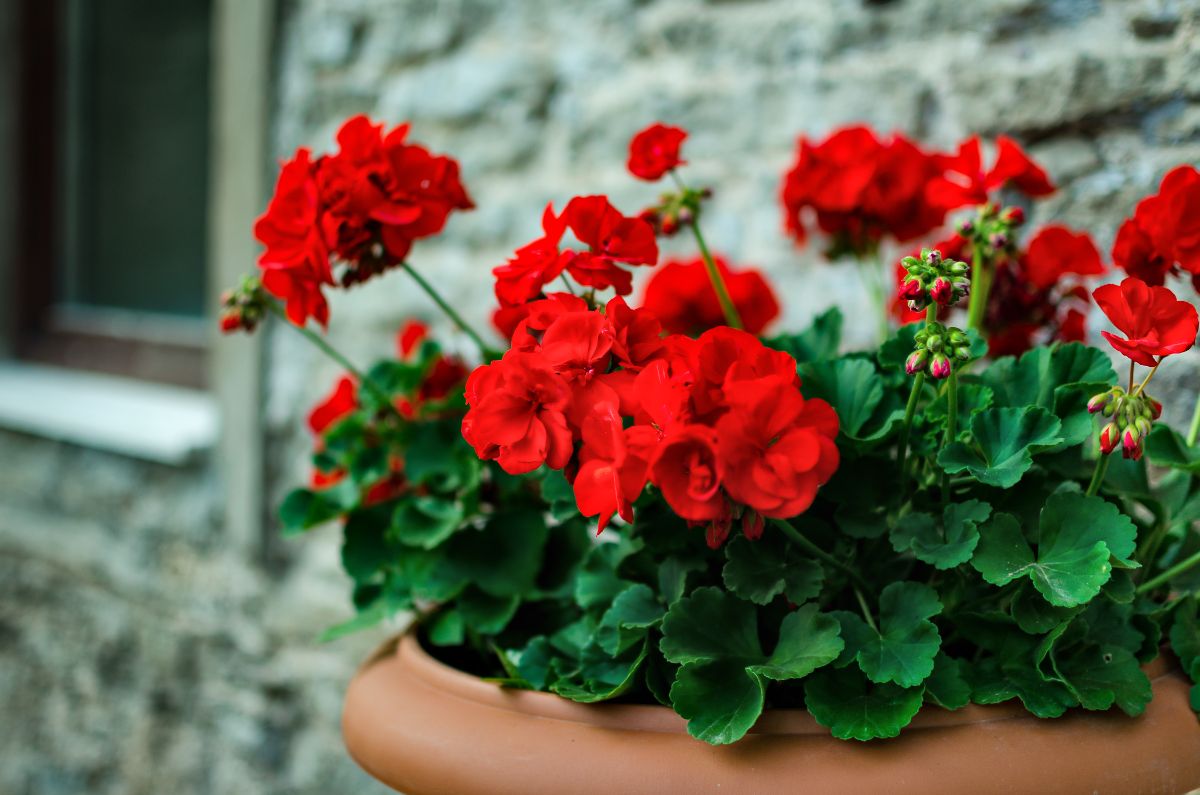
Geraniums are some of the most classic summertime flowers to add to your garden or porch planters. But with proper care and a bit of know-how, you can keep geraniums blooming from spring right up until the frosts of fall for three seasons of gloriously colorful blooms. Best of all, boosting geranium flower production isn’t hard… it just takes the right balance of light, water, nutrients, and a bit of pruning, too!
We hope this guide has inspired you to grow more geraniums in your garden this season. But if you’re looking for more annual plant care tips, we have a full guide on growing petunias right here.

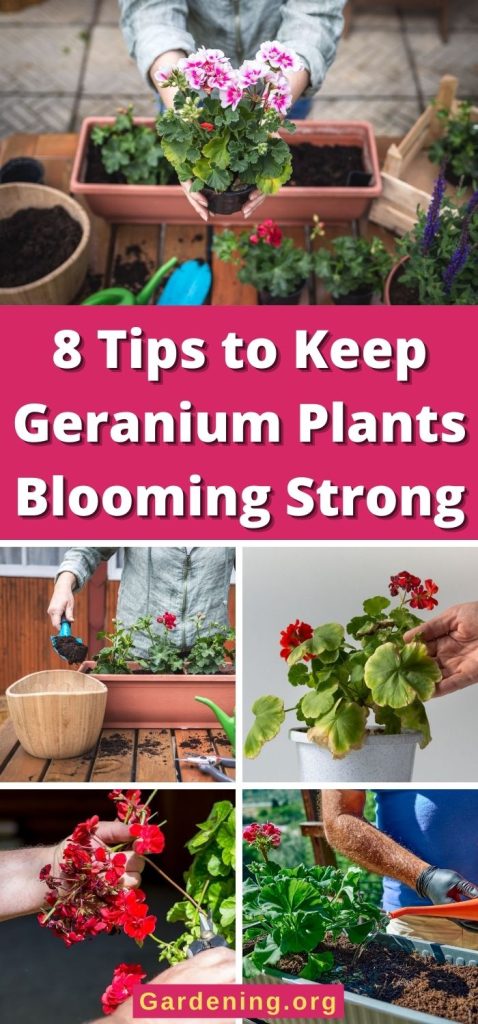
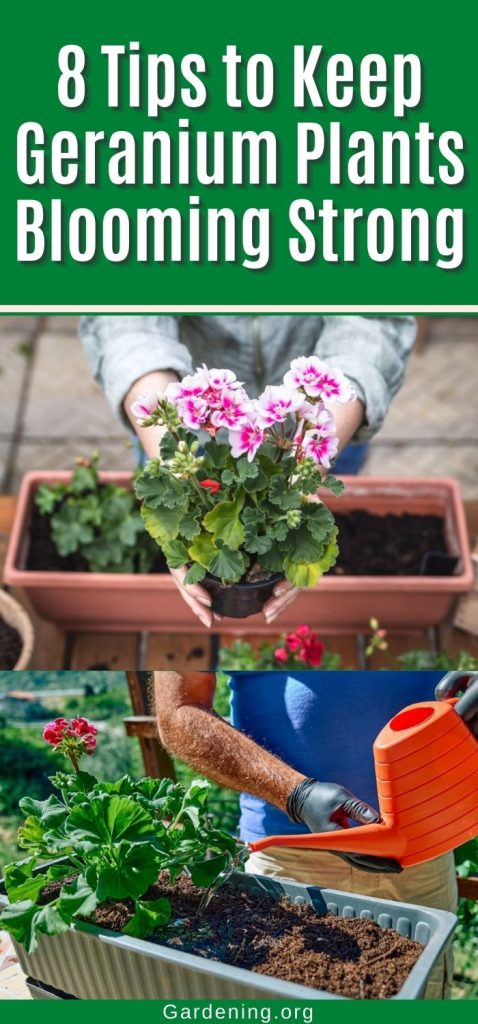
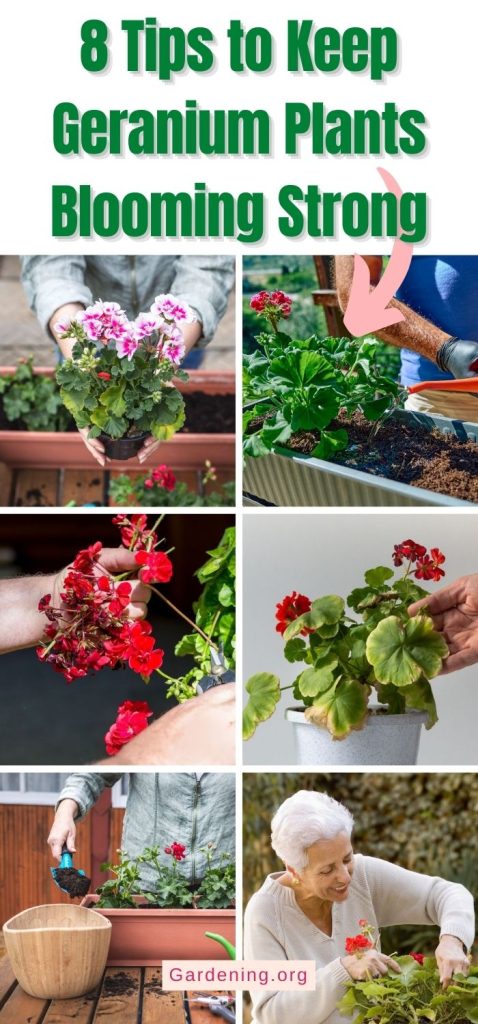


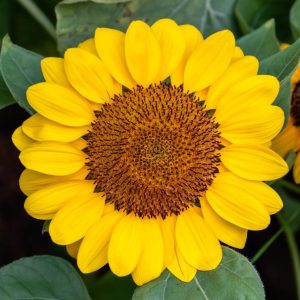
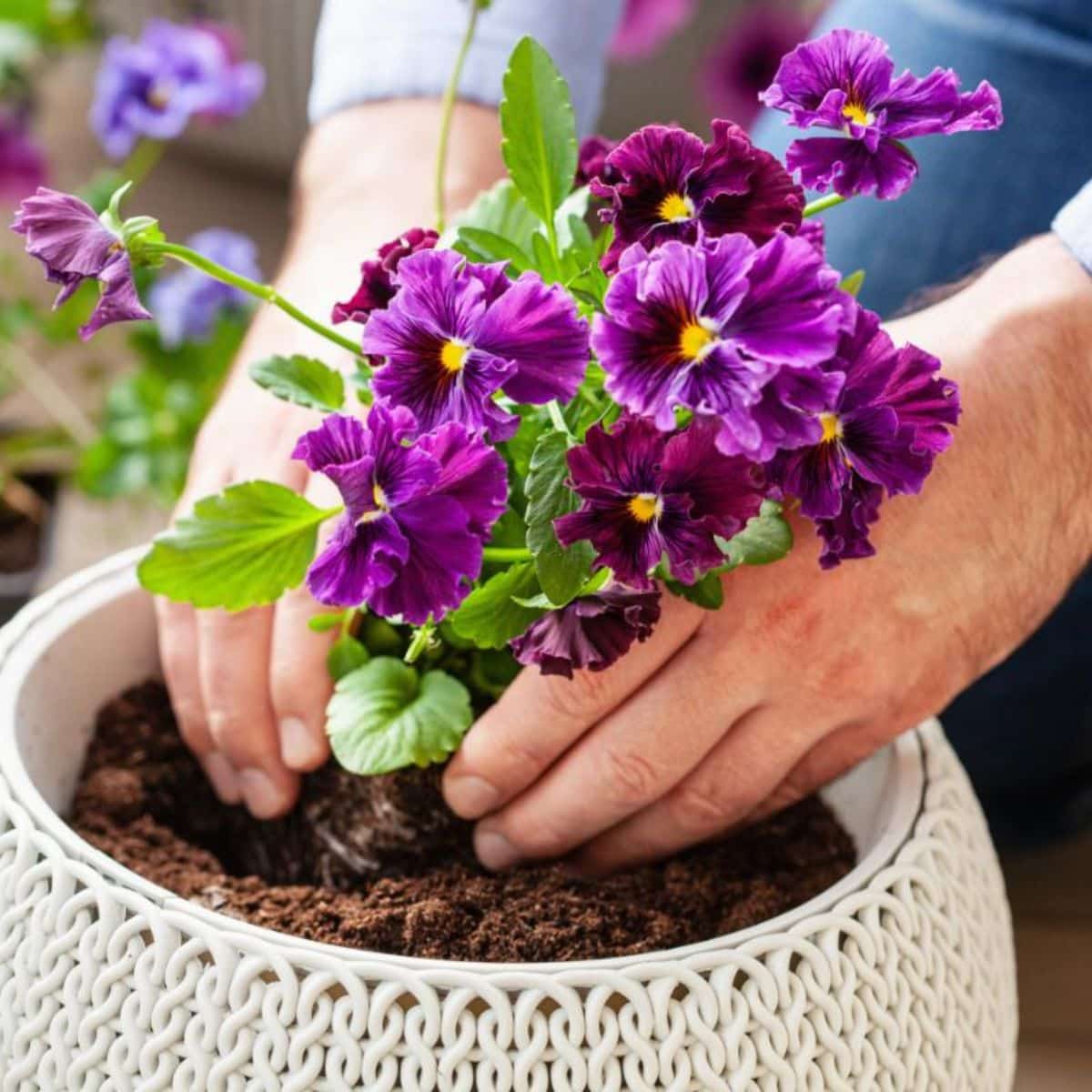
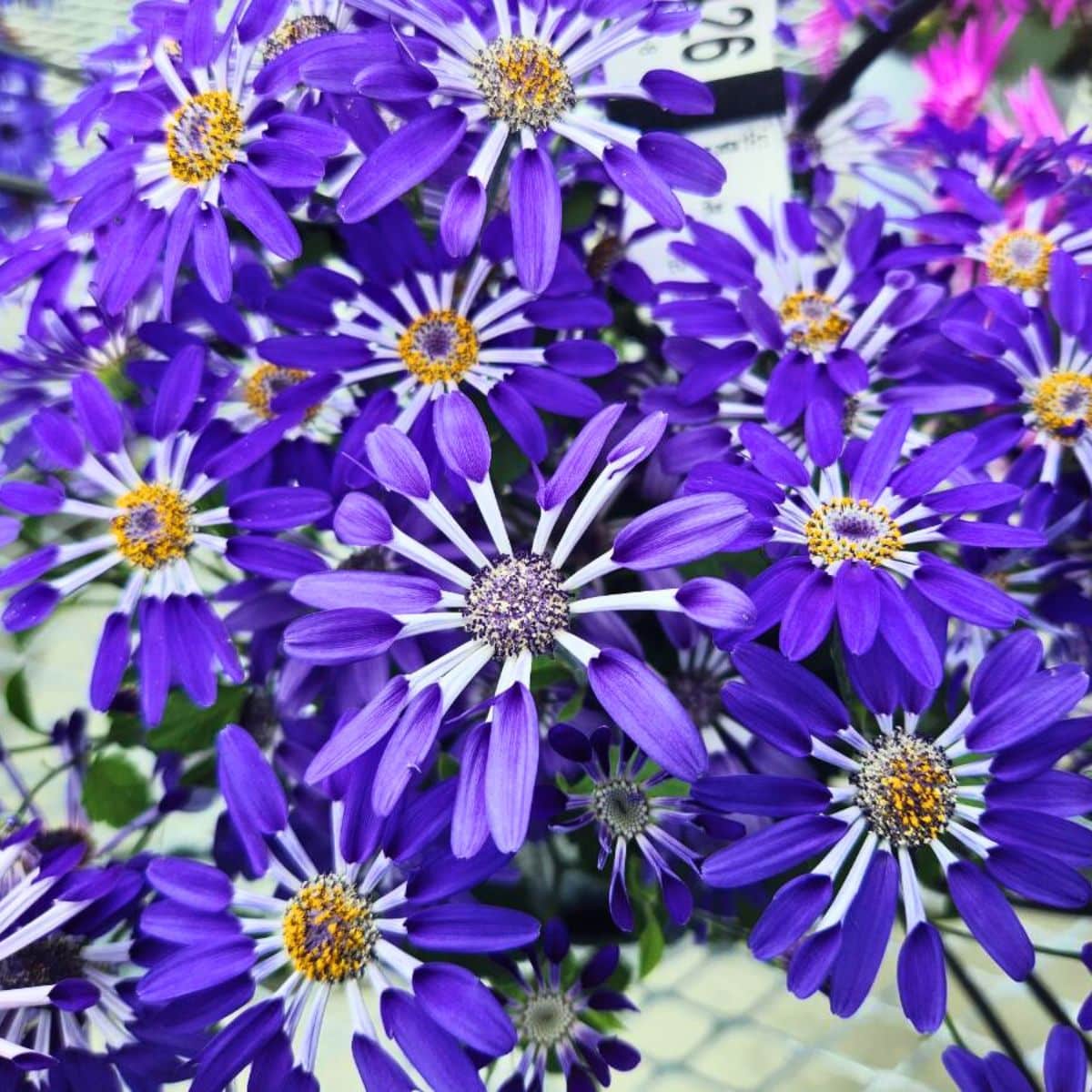
Carmel Haddock
Thank you for all the very helpful tips. Much appreciated.
Norma Rivera
Dear Ms Carmel Haddock. Thank you so much. I learned so much tonite about geraniums. What an excellent information. I'm going to follow your advice and good tips. I am so grateful I found you. Norma Rivera